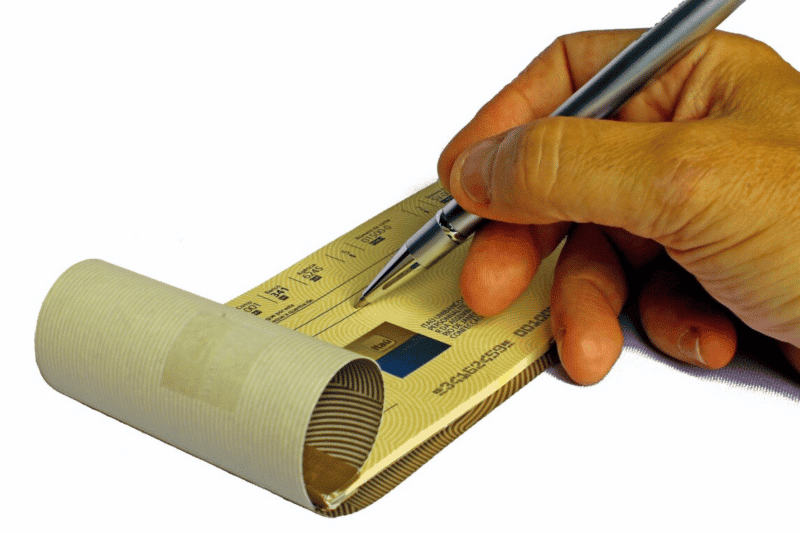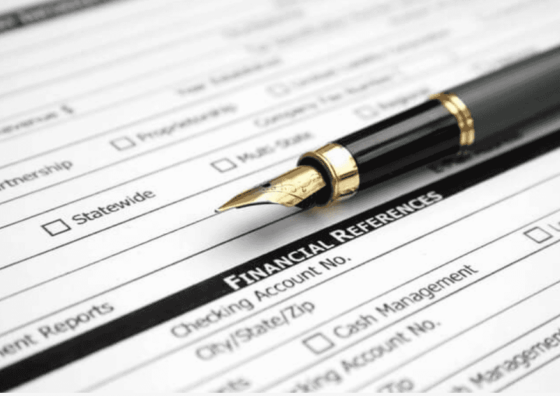Although they may not be as popular as they used to be, checks are still used today. But in order to cash it, deposit the money, or use it in some other way, you need to know how to endorse a check.
If done incorrectly, it can complicate the whole process — but we can help you avoid such mistakes. Keep reading to learn all you need to know about endorsing a check.
What Is Endorsing a Check?
Endorsing a check means signing it in a specific way so it can be deposited or cashed. It is done to improve your banking security and prevent fraud.
Most checks have a space for it in the back — a few blank lines. Some have a label saying “endorse here” or something similar. If there are no lines, signing a check on the back, in the area you usually would, is still acceptable.
Who endorses a check? The payee is the one who signs the check in order to accept the funds. The payee’s name on the front of the check needs to match the name in the signature.
Basic Types of Endorsements
Endorsing a check is generally quite simple, just like reading a check, but there are a few details to consider depending on the type of endorsement required. We’ll cover some of those methods and explain the differences below.
Blank Endorsement
This might sound a bit confusing — it doesn’t mean that the endorsement is blank. It just means that there is nothing more than the payee’s signature on it. This also means that, if you’re the payee, you can tell the bank employee what you want to do with the check.
You can use this type of endorsement for ATMs or mobile deposits too.
In general, endorsing a check without any restrictions or instructions is not very secure, but it’s the most common method due to its simplicity.
Restrictive Endorsement
Unlike blank endorsement, this method includes not only your signature but also a restriction, such as “for deposit only,” for example. This means that even if somebody found the check, they wouldn’t be able to cash it, as it can only be deposited into your bank account.
This kind of endorsement is a good option if you want to mail your check to the bank or if somebody else is depositing it on your behalf.
Similarly, you could write “for mobile deposit only” if you wish to deposit it via a mobile app.
Endorsement in Full
This is also known as a third-party check or special endorsement.
For this type of check, you should write “pay to the order of” and the payee’s name in the endorsement space. Then, you should sign your name under that instruction. Make sure to leave enough room for them to sign it as well.
Keep in mind that banks don’t have to accept such checks, and many don’t. So, if you can, find out your chosen bank’s policy on such checks. Moreover, it’s advisable that you call your bank beforehand and inform them of your transactions.
In fact, it would be best to go to the bank with the payee — or deposit the funds in your account first and transfer the funds from there.
If you can’t do that, the best advice is to check with both your bank and the payee’s bank if they would accept endorsing a check to someone else. Otherwise, there is a chance the check will bounce.
Other Types of Endorsements
Aside from the above three, the most commonly used types, there are a few more options to keep in mind.
Business Endorsement
Instead of an individual, you can also endorse a check to a business. This needs to be done by somebody with enough authority to deposit or cash the check in the name of the company. The process is a bit more complicated, but nothing that would take you too long.
What you need to do is:
- Write the name of the business on the endorsement line.
- Add your job title as proof that you have the authority to endorse a business check.
- Sign under that line.
Mobile Endorsement
Just like voiding a check, If you prefer to use your phone or website app for financial transactions, it may require a different method.
Some banks might ask you to write “for mobile deposit only,” while some checks may also have a checkbox for the remote deposit option, but it’s best to check your bank’s policy on endorsing a check for a mobile deposit.
Endorsing a Check with Two Names
You may endorse a check to two individuals simply by adding “and” or “or” in between the names.
It would be simpler to use “or” if you trust the people in question, as it means either of the two may use the check. If you choose “and,” it means that both individuals would have to be present at the bank when endorsing and cashing the check.
Keep in mind that if they want to endorse a check for deposit, they need a joint account.
Endorsing a Check for a Minor
If you want to reward your child with a check or if they got a present in the form of a check, there are two ways to endorse it.
Ideally, the check should be made to the parent’s name, and after the parent’s name, one should write the child’s name and “FBO” (for the benefit of) on the memo line. This would make it easier for the parent to cash in or deposit the check on their child’s behalf.
The other way is by:
- Signing your child’s name with a hyphen and the word “minor” next to it
- Signing your name underneath with a hyphen and the word “parent”
- Signing a check again below that.
Safety Concerns
There are some things you can do to reduce the risk of fraud and make working with checks as secure as possible. For example, once you sign the check, basically anybody who has it can use it. If you lost it, there wouldn’t be much you could do about it.
Therefore, if you’re planning to visit the bank, don’t endorse the check until you’re there. Similarly, if you want to endorse a check to a third party, it’s best to go to the bank with them, if possible.
Also, just like when voiding a check, don’t use a pencil that can be erased. Black or blue ink works best, but anything permanent will do.
Conclusion
Endorsing a check is a part of using it, so if your job requires you to work with checks or if you simply want to know how to use them, we hope this article has clarified the endorsement for you.
FAQ
Can I deposit someone else’s check in my account?
This depends on the policies of your bank. Some banks may not allow you to deposit a third-party check, while others allow it under certain conditions. In short, make sure to check this beforehand.
What are the three ways to endorse a check?
The three most common ways are:
- Blank endorsements
- Restrictive endorsement
- Endorsement in full
Do you have to endorse a check to deposit it?
Yes, you have to endorse a check if you want to deposit it or cash it. This is to prevent fraud — without this safety measure, if you lost a check, somebody else could find it and use it.
This also means that the name you sign in the back must match the payee’s name on the front of the check.
What is the safest way to endorse a check?
The safest way is to endorse it with some restrictions, as this ensures it can’t be used in any other way.
Aside from the payee’s name, you can also include the account number for additional security. So, you could write “for deposit only to account number xxxxxxxxxx.”
What do I write on the back of a check for a mobile deposit?
How to endorse a check for a mobile deposit is a pretty straightforward action — you should write precisely that (“for mobile deposit”) under your signature. Also, it’s a good idea to check your bank policy beforehand.






